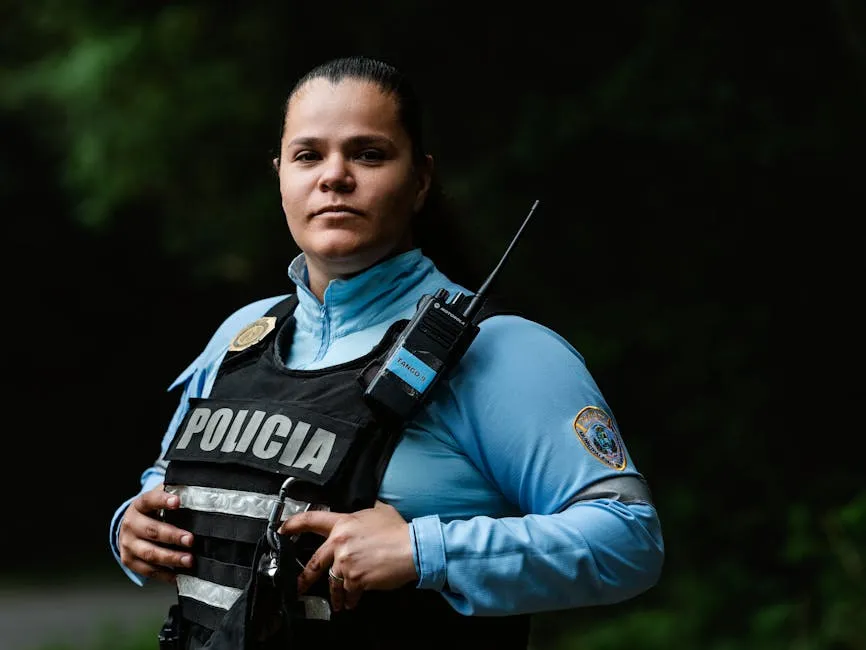Introduction
Welcome to Youngstown, Ohio! This city, rich in history, was once a booming steel town. Founded in the early 1800s, it played a vital role in America’s industrial revolution. Today, it holds a unique place in the hearts of its residents, showcasing a blend of resilience and community spirit.
Understanding crime statistics in Youngstown is crucial. Whether you’re a resident, potential mover, or a curious researcher, knowing the safety landscape is essential. Crime statistics paint a picture of safety and security, offering insights into the challenges the community faces. They help residents feel informed and enable prospective movers to make educated decisions about their future homes.
This article aims to provide a detailed analysis of crime statistics in Youngstown. We will explore trends, compare them with state and national averages, and discuss safety perceptions. By the end, you’ll gain a clearer understanding of Youngstown’s crime landscape and what it means for you.
Understanding Youngstown’s Crime Landscape
Overview of Crime Rates and Trends
Youngstown’s total crime rate stands at 36 per 1,000 residents, placing it among the higher crime areas in the country. For perspective, the national average hovers around 24 per 1,000 residents. This means if you live in Youngstown, your chances of being a victim of crime are higher than in many other places. In fact, the likelihood of experiencing either violent or property crime is about 1 in 28.
When we break this down further, we see a distinct pattern. Violent crimes account for 6.97 per 1,000 residents, while property crimes make up a whopping 29.18 per 1,000 residents. The statistics reveal an alarming truth: Youngstown’s violent crime rate is significantly above the national average. To illustrate, it’s reported that Youngstown’s violent crime rate is 85.4% higher than the national average.
Recent years have shown fluctuations in crime rates. For instance, overall crime has seen a slight increase of 5.1% compared to the previous year. However, violent crimes have decreased by 15.8%, suggesting that while some types of crime are on the rise, efforts to combat violent offenses are showing progress. Property crimes, on the other hand, have increased by 11.8%, raising concerns about safety on a community level.
These trends matter. They reflect the ongoing challenges faced by Youngstown and its residents. By understanding these statistics, you can better navigate the city’s safety landscape, whether it’s for daily life or future planning. For a more comprehensive look at crime statistics, you can refer to the Fremont Crime Statistics.

Speaking of safety, consider investing in a Home Security Camera System. It’s like having a vigilant friend watching over your property 24/7. You can catch any mischief before it escalates, and who doesn’t want that peace of mind?
Understanding crime statistics is essential for navigating safety in any community. Fremont Crime Statistics can provide additional insights into crime trends.
Comparison with State and National Averages
Youngstown’s Violent Crime Numbers
When evaluating crime in Youngstown, Ohio, it’s vital to compare it with both state and national averages. Spoiler alert: Youngstown doesn’t exactly rank among the safest cities. In fact, it stands out for all the wrong reasons.
Youngstown’s total crime rate is a staggering 36 per 1,000 residents. To put that into perspective, Ohio’s average is about 24 per 1,000, meaning Youngstown isn’t just breaking records; it’s shattering them! The city’s violent crime rate is a whopping 85.4% higher than the national average. That’s like finding an extra slice of pizza in a box you thought was empty – delightful, but not in this context.
If you want to stay safe, consider getting some Personal Safety Alarm. This nifty device is like having a pocket-sized bodyguard. Pull the pin, and it screams louder than your neighbor’s dog on a Tuesday afternoon, alerting everyone around that you might need help!

Property Crimes: A Different Kind of Challenge
Let’s break it down. The violent crime rate in Youngstown is recorded at approximately 6.97 per 1,000 residents. Compare that with the national average of 3.9 per 1,000; it’s clear that Youngstown is on a different level. The murder rate sits at 0.30 per 1,000 residents. While that may sound low, it’s important to remember that every number represents a life lost, a family affected, and a community in mourning.
Detailed Breakdown of Crime Statistics
Violent Crime Statistics
Murder
Youngstown’s murder rate may be just 0.30 per 1,000 residents, but don’t let that number fool you. It translates to 18 total murders within the city, which is a harsh reminder of life’s fragility. Although this figure indicates some fluctuation, it still contributes to the city’s perception of danger.

Assault
Assaults make up the bulk of violent crimes, clocking in at about 5.00 per 1,000 residents. That’s a total of 296 reported assaults! This statistic resonates with the community, illustrating that safety can often feel like a luxury. It raises questions about underlying issues, such as socio-economic factors, that may contribute to such high assault rates.
Rape and Robbery
With a reported rate of 0.61 per 1,000 residents for rape and 1.05 for robbery, these crimes add layers to the complex crime landscape. The socio-economic conditions in Youngstown, including poverty and unemployment, play a significant role in shaping these statistics. When community support systems struggle, crime tends to rise, and these data points serve as a wake-up call.
Property Crime Statistics
Burglary, theft, and motor vehicle theft are the primary categories of property crime in Youngstown. Burglary rates sit at 7.57 per 1,000 residents, while theft rates soar to 17.04 per 1,000. That’s a staggering number of theft incidents, indicating that your chances of becoming a victim of property crime are about 1 in 34. Motor vehicle theft is also notable, with a rate of 4.57 per 1,000 residents.
Neighborhoods such as East Side and Downtown struggle with high property crime rates, leaving residents feeling vulnerable. In contrast, areas like Kirkmere and Austintown South report much lower crime rates, showcasing the stark differences within city limits.

In summary, the crime statistics in Youngstown reveal a troubling landscape, particularly when comparing them to both state and national averages. The figures serve as reminders that safety is a shared responsibility, and understanding these numbers can lead to more informed community engagement and crime prevention efforts.
To enhance your home security, consider investing in Home Security System with Smart Lock. It’s not just a lock; it’s a fortress! You’ll sleep easier knowing your front door has more security than a Fort Knox vault!
Historical Trends in Crime Rates
Youngstown’s crime landscape has seen notable changes over the last decade. Analyzing crime rates provides the context necessary to understand these shifts. Initially, the city grappled with rising figures in property crime, while violent crime rates displayed a more complex narrative.
From 2010 to 2015, property crimes surged alarmingly. Burglary, theft, and motor vehicle theft became frequent headlines. A peak occurred in 2012 when property crime rates reached their zenith, leaving residents concerned about safety. However, after 2015, an interesting trend emerged. Property crime rates began their slow but steady decline. Community initiatives and increased police presence likely contributed to this positive shift.
In contrast, violent crime rates exhibited fluctuations. For instance, 2012 marked a high in violent offenses, with a significant number of assaults and robberies reported. However, by 2018, there was a notable decrease in violent crimes, dropping by approximately 15.8%. This decline reflects successful law enforcement efforts to combat gang violence and improve community safety.

To visualize these trends, consider the following table, which summarizes key statistics over the past decade:
| Year | Violent Crime Rate | Property Crime Rate |
|---|---|---|
| 2012 | 1,027.54 | 6,005.5 |
| 2015 | 733.66 | 4,484 |
| 2018 | 646.61 | 3,779.9 |
| 2022 | 411 (estimate) | 1,721 (estimate) |
These numbers illustrate a compelling narrative. While property crime rates have generally decreased since their peak, violent crimes have shown resilience. The overall crime rate in Youngstown remains a concern, but the positive trends in property crime suggest that community efforts are bearing fruit.
In summary, understanding these historical trends is crucial for residents and potential movers. It highlights the ongoing challenges and successes in addressing crime in Youngstown. Keeping an eye on these statistics can help residents make informed decisions about safety and community engagement.

Factors Influencing Crime in Youngstown
Socio-Economic Factors
In Youngstown, crime isn’t just a random occurrence; it’s often rooted in socio-economic challenges. Poverty and unemployment are significant players in the crime equation. With an unemployment rate of 7.1%, higher than the national average of 4.7%, many residents find themselves in a financial squeeze. When people struggle to make ends meet, desperation can lead to crime. It’s like trying to bake a cake with no flour—you can’t create something good without the right ingredients.
Housing costs also contribute to the crime landscape. While the average rent in Youngstown is about $638, which is lower than the national average, financial strain can still push families to the brink. High housing costs in specific neighborhoods lead to feelings of instability and insecurity. This, in turn, can create environments where crime flourishes.
Community engagement plays a crucial role in mitigating these issues. When residents actively participate in local affairs, they foster stronger neighborhood ties. Studies show communities with higher levels of engagement tend to experience lower crime rates. Think of it as a neighborhood watch, but instead of just keeping an eye out for trouble, you’re building relationships. A strong community can act as a deterrent to crime, creating a safer environment for everyone.

Law Enforcement and Community Initiatives
Law enforcement in Youngstown faces its challenges, but it also has opportunities to make a difference. The officer-to-resident ratio stands at about 2.94 officers per 1,000 residents, slightly below the national average of 3.25. This discrepancy can hinder police responsiveness and community policing efforts. When officers are stretched thin, it’s harder to build trust and cooperation with residents.
Community policing strategies are essential. These approaches encourage officers to engage with the community beyond just responding to calls. They help build rapport with residents, making it easier for people to report crimes or suspicious activity. A friendly neighborhood officer can be more effective than a squad car speeding down the street.
Additionally, various community initiatives aim at reducing crime and improving safety. Programs like neighborhood watch groups and youth mentorship opportunities provide platforms for residents to take an active role in their community. These initiatives not only empower residents but also foster a sense of pride and responsibility.
For example, local organizations often host events to bring people together. Whether it’s a safety fair or a community cleanup day, these activities promote unity and vigilance. When people feel connected, they are more likely to look out for one another, reducing the likelihood of crime.
In summary, socio-economic factors and law enforcement strategies significantly influence crime rates in Youngstown. By addressing financial challenges and fostering community engagement, the city can work towards a safer environment for all. With ongoing efforts and community participation, Youngstown can rewrite its crime story, one neighborhood at a time.

Conclusion
Understanding the crime statistics in Youngstown reveals the pressing challenges the community faces. Recognizing the socio-economic factors that contribute to crime is essential for residents and potential movers alike. The interplay between poverty, unemployment, and housing costs forms a complex backdrop against which crime unfolds.
Furthermore, the role of law enforcement and community initiatives cannot be overstated. While challenges exist, the commitment to community engagement and effective policing strategies can lead to positive changes. As residents come together and actively participate in crime prevention efforts, they contribute to a safer, more secure environment.
In conclusion, awareness of crime statistics is vital. It equips residents with the knowledge needed to navigate their surroundings and make informed decisions. The ongoing efforts to improve safety in Youngstown, combined with community involvement, create a hopeful future. By fostering connections and supporting one another, residents can address crime-related issues effectively. Together, they can build a city where safety and community spirit thrive.

Don’t forget to keep your loved ones safe with a Pepper Spray. It’s a small but mighty tool that can give you a fighting chance if things go sideways. Just remember to practice your aim!
FAQs
What are the most common crimes in Youngstown?
Youngstown’s crime scene is a bit like a bad movie—lots of drama and not enough happy endings. The city faces a higher-than-average rate of both violent and property crimes. Among the violent crimes, assaults top the list at about 5.00 per 1,000 residents. That’s a total of around 296 reported assaults! Following closely are robberies at 1.05 per 1,000 residents, equating to about 62 incidents. When it comes to property crimes, the numbers are equally startling. With a property crime rate of 29.18 per 1,000 residents, Youngstown’s residents deal with burglaries, thefts, and motor vehicle thefts daily. Burglary alone occurs at a rate of 7.57 per 1,000, while theft is alarmingly high at 17.04. So, if you’re planning to move here, make sure to invest in some sturdy locks!
How does Youngstown’s crime rate compare to other cities?
In the grand game of “Who’s the most dangerous city?” Youngstown isn’t winning any awards. Its overall crime rate of 36 per 1,000 residents is a staggering 53% higher than the national average. To add some spice, it’s also 102% higher than the Ohio average. When stacked against nearby cities like Campbell and Boardman, Youngstown’s statistics are like comparing a fire-breathing dragon to a cute puppy. While Campbell boasts a crime rate of just 25.2 per 1,000, Youngstown’s figures put it in a different league altogether. If you want to feel safe, you might want to consider a neighborhood outside Youngstown!
What neighborhoods are considered safest in Youngstown?
While Youngstown has its fair share of high-crime areas, some neighborhoods shine like diamonds in the rough. Kirkmere, Austintown South, and Poland Center are among the safest enclaves, boasting lower crime rates. These neighborhoods have community programs and engaged residents who prioritize safety. It’s like a secret club for safety! Investing in a home in these areas not only provides peace of mind but also fosters a sense of community. After all, who wouldn’t want to live where neighbors look out for each other?
What actions are being taken to reduce crime in Youngstown?
Don’t worry; Youngstown isn’t just sitting back while crime runs rampant! The local government has rolled out various community programs aimed at crime reduction. These range from neighborhood watch initiatives to increased police presence in high-crime areas. Police initiatives focus on community engagement, encouraging officers to build relationships with residents. When law enforcement is seen as a partner rather than an adversary, the community can thrive. Local government also collaborates with organizations to create youth mentorship programs, aiming to steer young people away from crime. While the road to a safer Youngstown may be long, these efforts show that progress is possible!
How can residents stay informed about crime in their area?
Staying informed is vital for safety, and Youngstown residents have several resources at their disposal. Neighborhood watch programs are excellent for keeping an eye on local happenings. They create a strong sense of community while fostering vigilance. Local news outlets also provide timely updates on crime statistics and incidents. Websites like Nextdoor allow residents to share information about community issues, from suspicious activity to neighborhood events. Online crime maps give a visual representation of crime trends, helping residents navigate their surroundings effectively. In a world where information is power, staying informed can help residents feel safer and more connected to their community.
Please let us know what you think about our content by leaving a comment down below!
Thank you for reading till here 🙂
All images from Pexels




